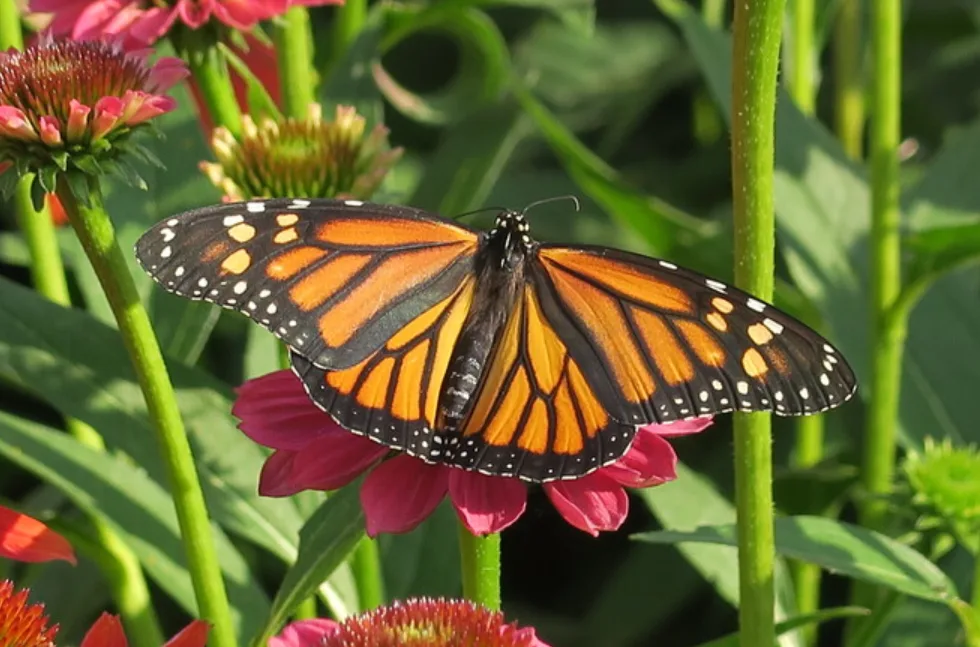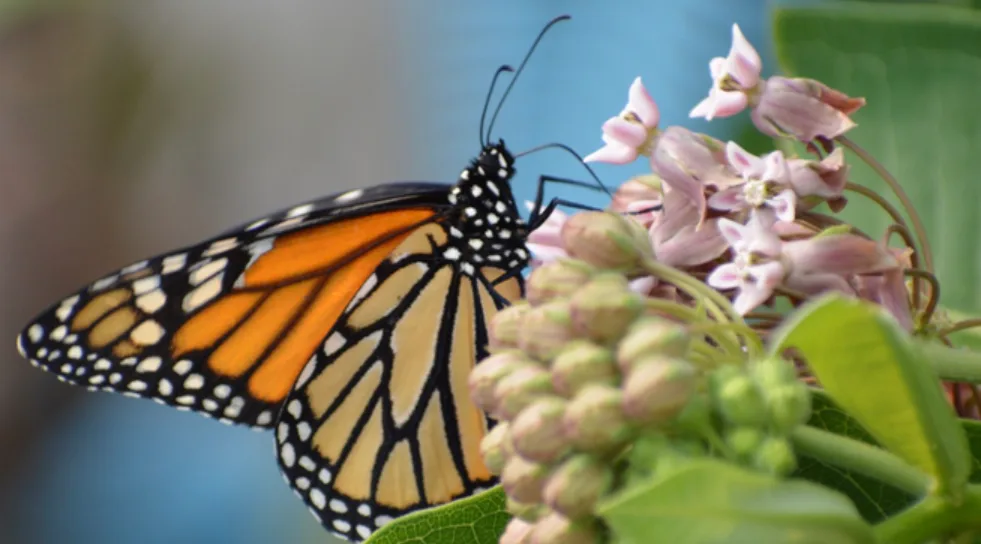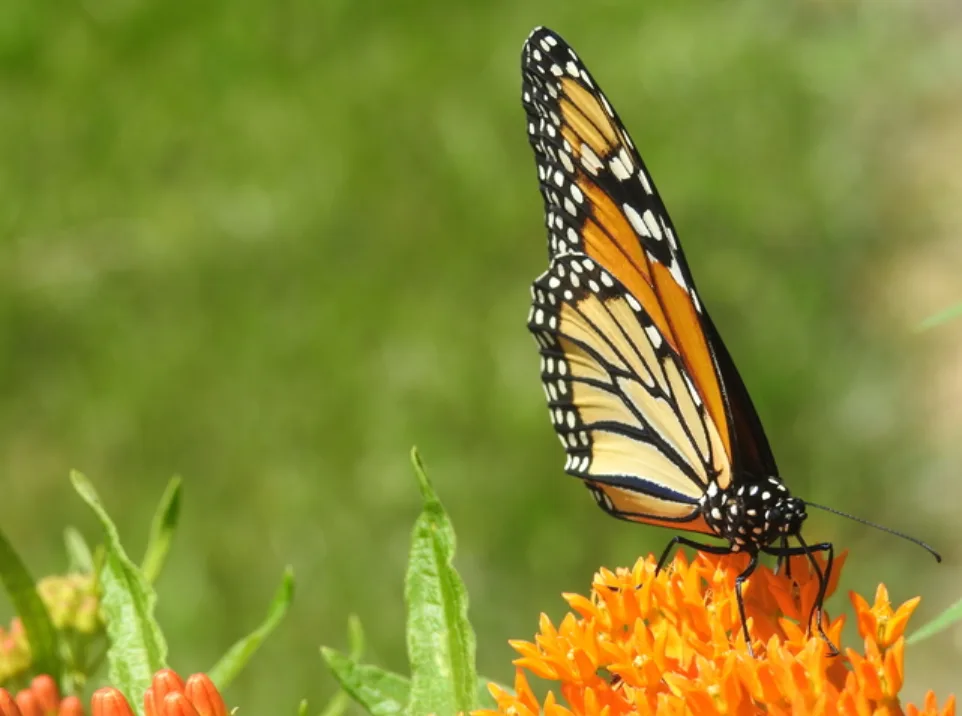
Get ready: The monarchs are coming
Learn a bit about monarchs and how you can help them out.
Now is a good time to get to know monarch butterflies.
After all, many of us will be spending more time at home this summer, with plenty of time to watch butterflies drift by overhead.
Monarchs typically lay their eggs on milkweed plants in March and April, and we can expect to see butterflies sometime in June.
Each year monarchs -- arguably the most recognizable of all North American butterfly species due to distinct orange, black and white markings -- make their way to Mexico, traveling up to 160 kilometres per day.

Photo submitted to The Weather Network by Teng Lim.
As they migrate the butterflies help pollinate approximately one-third of the fruits and vegetables that humans consume.
The 5,000 kilometre journey, the longest butterfly migration on the planet, can take upwards of two months.
Monarchs are a vulnerable species, with population numbers declining, and bouncing back, each year, depending on weather conditions (they can't survive in the cold), food availability (milkweed is a primary nutrition source) and, linked to that, herbicides and deforestation.
In 2018-2019, an impressive 300 million monarchs were observed wintering in Mexico, according to Cornell. The numbers are reassuring, given less than 60 million monarchs were wintering in the area in 2014.
But that doesn't mean monarchs are 'out of the woods', so to speak.
"It takes three or four successive generations of monarchs to make it into Ontario and then into the U.S.," writes Jode Roberts, a communications specialist with the David Suzuki Foundation. "Since they weigh less than a paperclip ... they really depend on a stable environment."

Photo submitted to The Weather Network by David Smith.
HERE'S HOW YOU CAN HELP
Milkweed plays a crucial role in the monarch life cycle and in some parts of Canada and the U.S., more than 90 per cent has vanished due to agricultural practices.
"Milkweed is an essential plant for the monarch butterfly because it's the only plant that females will lay eggs on and it's the only food that monarch caterpillars will eat. So they're wholly dependent on this one specific plant," Roberts says.
Helping the monarch can be as simple as planting one of the many species of native milkweed somewhere on your property.
You can take that a step further by setting up a monarch waystation and registering it online with monarchwatch.com.
Waystation kits can be purchased through the organization for $16, and they include everything needed to help monarchs along their journey.
VIDEO: BUTTERFLIES IN A BACKYARD TREE, AUGUST 2018
CREATING A MONARCH WAYSTATION
The types of plants used in a waystation vary based on geography, but Monarch Watch recommends the following:
For gardens east of the Rocky Mountains
MILKWEED
Butterfly Weed (Asclepias tuberosa)
Common Milkweed (Asclepias syriaca)
Swamp Milkweed (Asclepias incarnata)
GENERAL NECTAR PLANTS
Indian Blanket (Gaillardia pulchella)
Purple Coneflower (Echinacea purpurea)
Joe Pye Weed (Eupatorium purpureum)
Scarlet Sage (Salvia coccinea)
Tithonia Torch, Mexican Sunflower (Tithonia)
Zinnia, Dahlia Mix (Zinnia elegans)

Photo submitted to The Weather Network by Lori Boradhead.
For gardens west of the Rocky Mountains
MILKWEED
Butterfly Weed (Asclepias tuberosa)
Narrowleaf Milkweed (Asclepias fascicularis)
Showy Milkweed (Asclepias speciosa)
Swamp Milkweed (Asclepias incarnata)
GENERAL NECTAR PLANTS
Blue Sage (Salvia farinacea)
Chia (Salvia columbariae)
Scarlet Sage (Salvia coccinea)
Tithonia Torch, Mexican Sunflower (Tithonia)
Zinnia, Dahlia Mix (Zinnia elegans)










